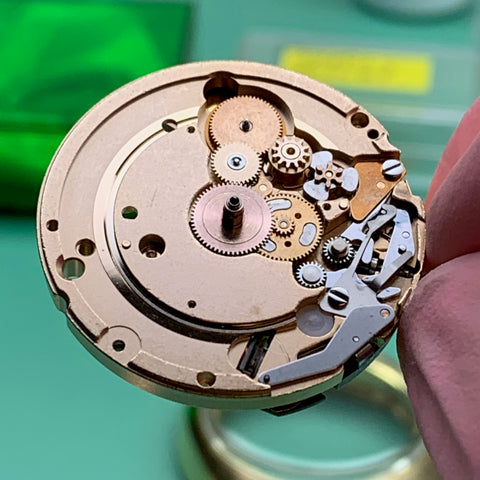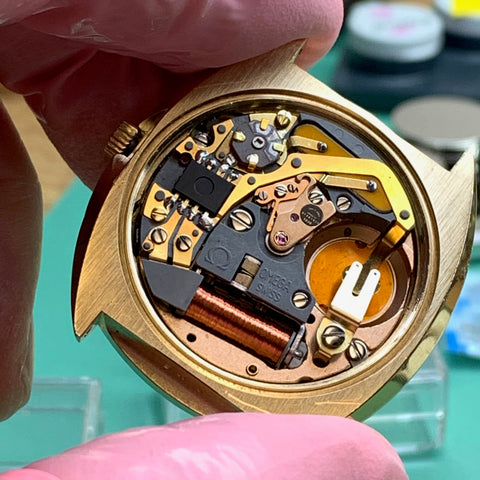I recently serviced this 1970's Omega calibre 1310 Megaquartz watch for a ClockSavant customer. I've discussed the Omega 1310 in previous posts. Despite being Omega's first quartz movement-- one produced under duress from the threat of the oncoming quartz crisis-- it is exceptionally robust and accurate. If properly serviced, they run with extraordinary accuracy almost 50 years later. I wanted to talk briefly about what goes into quality servicing of this watch and quartz watches in general. Full, complete, and utter ;-) disassembly. Completeness of disassembly is the operative concept. Know the parts that should not be cleaned with traditional methods-- some were not designed to go into cleaning fluid. Handle delicate parts (e.g. index, coil, ...) with utmost care. Proper use of correct and unexpired lubricants. Clean/lubricate pushers (can be very messy after 50 years.) Thoroughly clean the bracelet and case. Inspect for issues or needed repairs to the bracelet and crystal so neither (along with the watch) go missing one day. Test for all manufacturer electrical measurements-- this takes time and to do it with the best results, expensive equipment. Compare measurements from the quartz oscillator and the underlying motor. Iteratively adjust accuracy using whatever means are available for the movement (trimmer) and stop when it's best, not just acceptable. All of this assures accuracy, long battery life, and long-term health. Case the watch in a clean room environment (dust and dirt free) with suction, vacuum & use correct materials to safely clean the hands/dial. Set hands with controlled tools and protection. Tighten and straighten hands if required. Verify hands are level and straight in all directions and clearing each other. Further inspections and testing until shipment. Pack with extreme care and quality materials.









